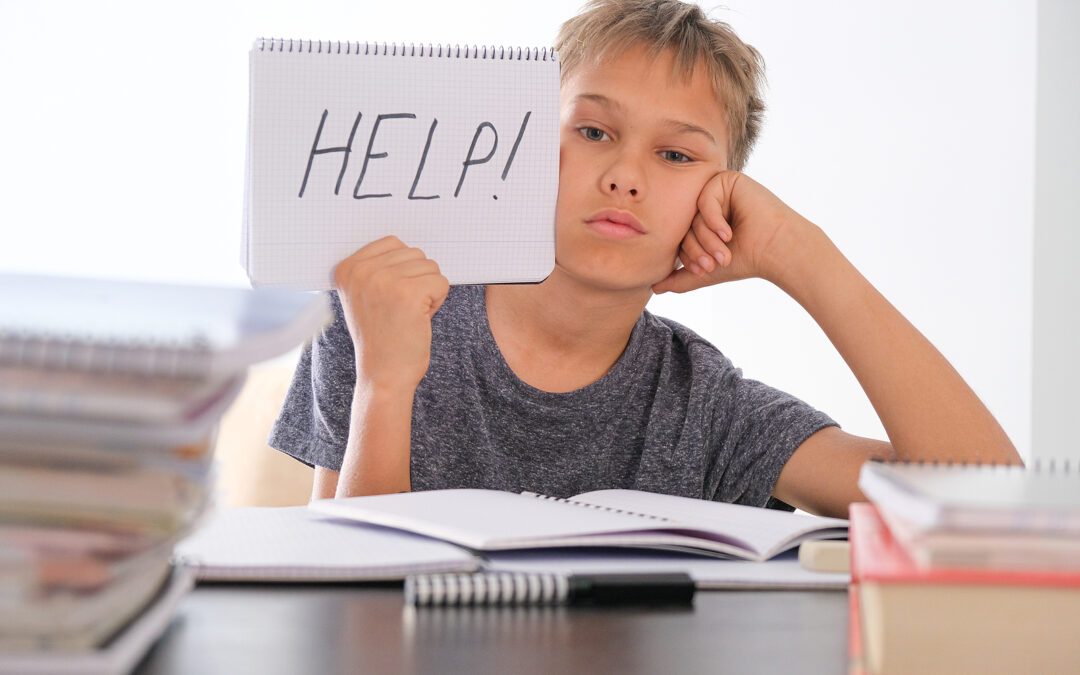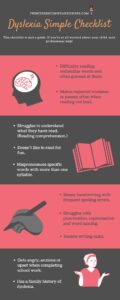Is there a dyslexia test to carry out at home?
Before I start, it’s really important to note that you cannot diagnose your child with dyslexia at home. They need to be seen by an educational psychologist for a full diagnosis.
However, this home-based dyslexia test is designed to be an indicator. If you run through the checklist with your child and they exhibit at least 10 of the characteristics, there is a chance your child may have dyslexia and will need to be professionally assessed.
If you are at all concerned, I recommend firstly contacting your child’s teacher to see how best to move forward in collaboration with the school.
I have written a series on dyslexia in the classroom which includes articles and graphics to download and share with all of your child’s educators. Start with 40 top tips for teaching a child with dyslexia.
This dyslexia resource pack is a must-have for home and school. Click here to download it today!
The most consistent aspect of dyslexia is its inconsistency
The earlier a child with dyslexia is diagnosed, the more effective interventions will be – however it’s also crucial to note that these characteristics can vary day-to-day and even hour-to-hour. Dyslexia is not consistent and therefore a more in-depth dyslexia test should be carried out by professionals if you are concerned.
Run through this list and check the statements that relate to your child:
General
- Is bright, highly intelligent but has great difficulty reading, writing and at grade level.
- Is often given labels such as careless, immature, badly behaved, attention seeking or lazy
- Difficulty keeping focused
- Isn’t behind enough to be helped by the school’s Special Educational Needs department
- Tests badly
- Has poor self-esteem, hides weaknesses and is easily frustrated/emotional by school reading or testing
- Daydreams often and loses track of time regularly
- Prone to motion sickness when reading due to disorientation when the words move about a page.
- Talented in art, drama, music, sports, story-telling, business and sales, design, building, and/or engineering
- Learns best through hands-on work, demonstrations, experimenting and through the use of visual aids.
Reading, Spelling and Vision
- Often suffers from headaches, dizziness or stomach aches when reading
- Confused by numbers, letters, words, sequences and/or spoken explanations
- Reading and/or writing often includes repeated words. Extra words, omitted words, substitutions and letter/number reversal
- Either extremely observant or lacks depth and peripheral vision
- Reads without much comprehension
- Spellings are inconsistent and phonetic
- Words and letters appear to move on the page when reading, writing and/or copying
- Appears to have a vision impairment but eye exams are all clear.
Writing and Motor Skills
- Often clumsy and uncoordinated. Difficulty with fine and/or gross motor skills. Finds ball sports particularly difficult
- Struggles with writing or copying. Handwriting is often illegible and the pencil grip is awkward
- Can be ambidextrous. Regularly confuses left/right and under/over
Speech, Language and Hearing
- Has extremely sensitive hearing and easily distracted by sounds
- Difficulty putting thoughts into words. Leaves sentences incomplete, stutters under stress, mispronounces long words, changes the order of phrases, words and syllables when speaking.
Memory and Cognition
- Amazing long-term memory for locations, experiences and faces
- Poor memory for sequences, facts and information that appears in written form and not experienced
- Struggles when learning by rote
- Thinks with images and feeling not with sound or words. There is usually little internal dialogue.
Maths and Time
- Has difficulty telling the time, managing time and being on time. Click to find out more about dyslexia and organization.
- Struggles when learning sequenced information or tasks
- Can count but has difficulty counting objects and/or dealing with money
- Dependence on finger counting when calculating answers. Often knows the answers but can’t work it out on paper
- Finds arithmetic easier than word problems.
- Has deep issues with algebra and higher maths.
Behavior and development, Health and Personality
- Late developmental stages such as talking, crawling, walking
- Either very unorganised or compulsively organised – rarely an in between
- Often becomes the class clown to mask difficulties or can withdraw into themselves in a school environment
- Mistakes will significantly increase when the child is confused, under time pressure and/or stressed
- Emotionally sensitive
- Strong sense of justice
- Ear infections are common.
- Sensitive to foods, additives and chemical products
- Prone to ear infections; sensitive to foods and additives
- Is often a very deep or very light sleeper. Again, nothing in between.
- Bedwetting beyond the appropriate age
- Either a high or low pain tolerance.
As I said at the start of this article, these are all just indicators. However, if you have checked more than 10 of these points, there is a stronger chance that your child has dyslexia and you should contact a professional for another more substantial dyslexia test.
Even if they are dyslexic, this is by no means the end of their academic success or general success. Dyslexia is just a different way of learning. As a parent, you will be aware of how your child prefers to work, when they thrive, when they struggle. They will of course have to work that little bit harder than others and certain tasks will take them a little bit longer, but kids with dyslexia see the world differently. Many of them possess the most wonderful unique view on life which we should never ignore. They can be anything they want to be. If you haven’t already read my article on famous people with dyslexia, read it here. You will without doubt be pleasantly surprised, comforted and understand that it is just a hurdle, not a life-sentence.
If as a parent, you are feeling overwhelmed, you can also contact me here on the site. I am always open to discussing, supporting and sharing my experiences.
Technology is moving at such a rapid pace and it’s so important that we take advantage of it in order to support our children. Apps such as
Readability make reading fun and help to guide the kids at their own pace!
Don’t let reading challenges hold your child back! Try our #1 Reading App Today! FREE for 30 Days! (#ad)
Download this easy-to-use dyslexia checklist



Recent Comments